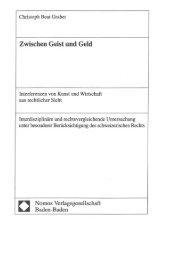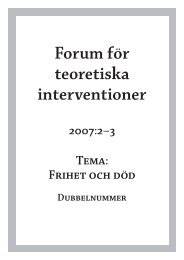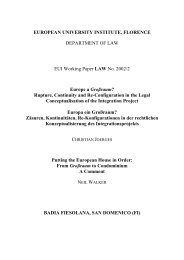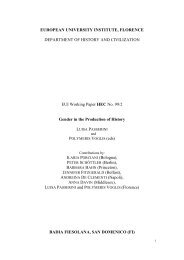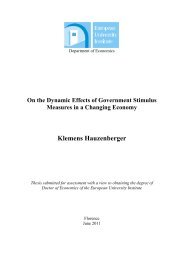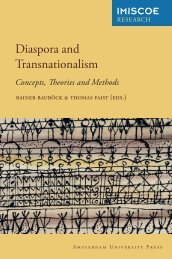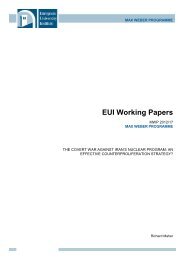Sinziana-Elena Poiana Ioana Lupea Irina-Madalina Doroftei Alina ...
Sinziana-Elena Poiana Ioana Lupea Irina-Madalina Doroftei Alina ...
Sinziana-Elena Poiana Ioana Lupea Irina-Madalina Doroftei Alina ...
Create successful ePaper yourself
Turn your PDF publications into a flip-book with our unique Google optimized e-Paper software.
consequences on the presence of religious symbols and religious actors in the public space. Therefore,<br />
a clarification of the boundary between what is acceptable and what is not acceptable in the use of<br />
religious symbols and practices in public schools is necessary.<br />
The new context considerably raises the stakes of „the case of Moise”. Giving intolerant Churches<br />
authority over students within public education institutions affects the European Convention aspiration<br />
„of the foundation of justice and peace”.81 The stake in this case is to recall the European Convention<br />
guarantees when the state supports religious actors unfriendly towards human rights and the rights of<br />
the child.<br />
Religious icons on the schools walls are not “passive symbols”<br />
(Religious) icons are routinely used in Romanian public schools as elements of religious services and<br />
other religious ceremonies. These kinds of events are organized on the first day of the academic year,<br />
and on other occasions as well. There are cases when project applications for European funds are<br />
blessed by the religious-education teachers before submitting it. Teachers of religion roam around the<br />
school several times every year carrying a religious icon and sprinkling around holy water. Students,<br />
teaching staff, members of the administration are asked to kiss the icon during the procession. In this<br />
context the presence of (religious) icons is not comparable to that of crucifixes (see the Grand<br />
Chamber argument at §72), since “an icon on a wall is contrary to the nature of a passive symbol” and<br />
“it is strongly deemed to have an influence on pupils as much as didactic speeches or participation in<br />
religious activities.”<br />
Here is a testimony about an academic year opening ceremony showing the close connection between<br />
the presence of religious symbols and religious militancy in schools:<br />
His Holiness Archbishop Casian, the Bishop of the Lower Danube, was invited to the school<br />
opening service. After having blessed the school and the pupils attending it, after having<br />
displayed religious symbols, he held a discourse on the evil nature of religious sects, on the<br />
serious harm that they do to a religious society, and on their unfortunate impact on children so<br />
easily swayed. For approximately 30 minutes, students waiting to enter their classroom had to<br />
be present during the Bishop’s monologue, without being able to object or go away, since they<br />
were supposed to enter their classrooms accompanied by their teachers. 82<br />
A teacher of history and civics in the county of Braila was forced to resign and quit the locality after<br />
his refusal to kiss an Orthodox icon at an academic year opening ceremony. Pressures were exerted on<br />
the teacher, who identified himself as an Evangelical, through the school and through the family<br />
hosting him as well. Kissing the icon would have represented an act against the values and practices of<br />
the teacher`s own religion.<br />
These are random examples. Using (religious) icons in schools or other circumstances with the<br />
purpose of orthodoxizing the educational environment is common practice allover the country.<br />
Icons, part of an intolerant Orthodox religious education<br />
Investigations proved an undeniable connection between racial and ethnic stereotyping and Orthodox<br />
religious education. Religion teachers blame Jews for “having eventually turned their backs on<br />
Christ”, for having left the ranks of the “truly faithful”. The Orthodox faith has the “truth”, unlike the<br />
Jewish faith, which “does not know the truth”. In invoking the Apocalypse, some religion teachers<br />
81 The European Convention on Human Rights, “Preamble”.<br />
82 Interview 3: the opening ceremony was taking place in a school in the county of Galati.<br />
47



